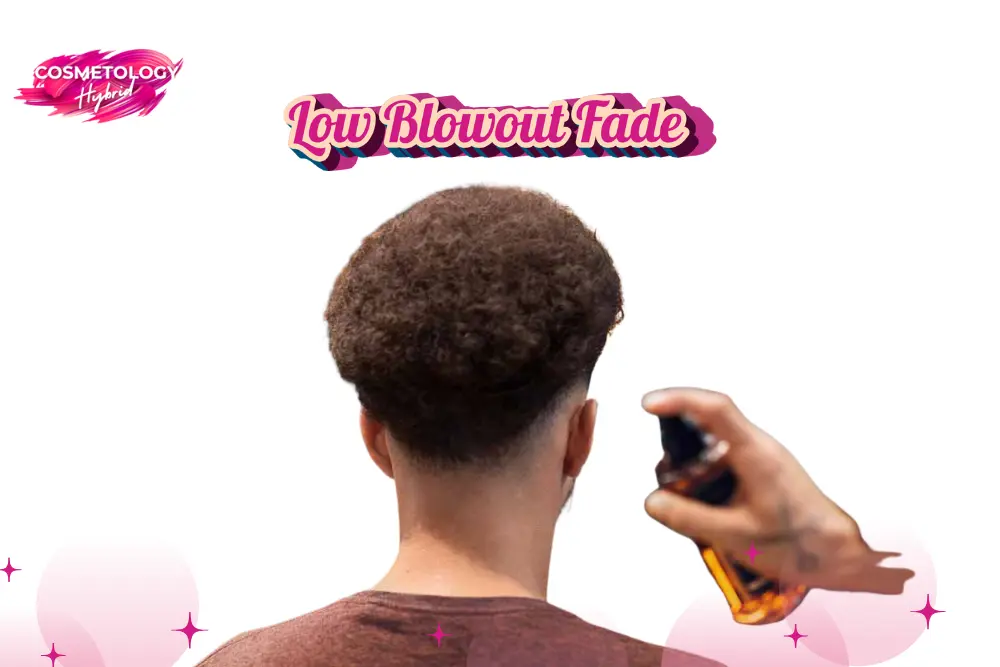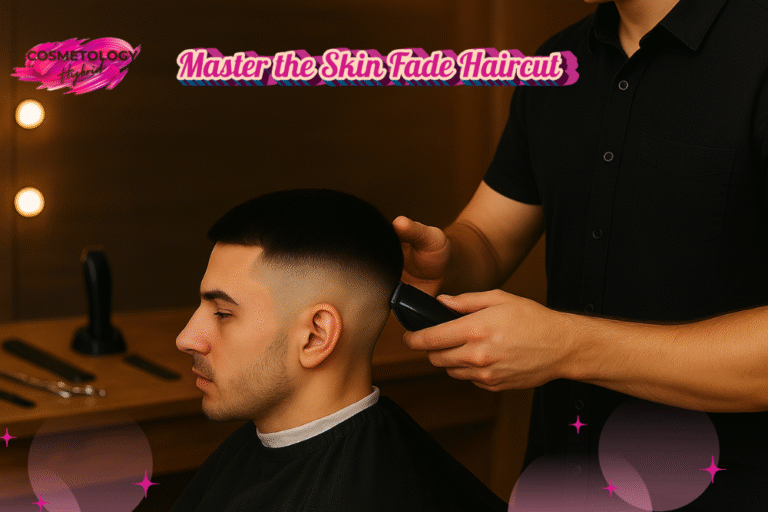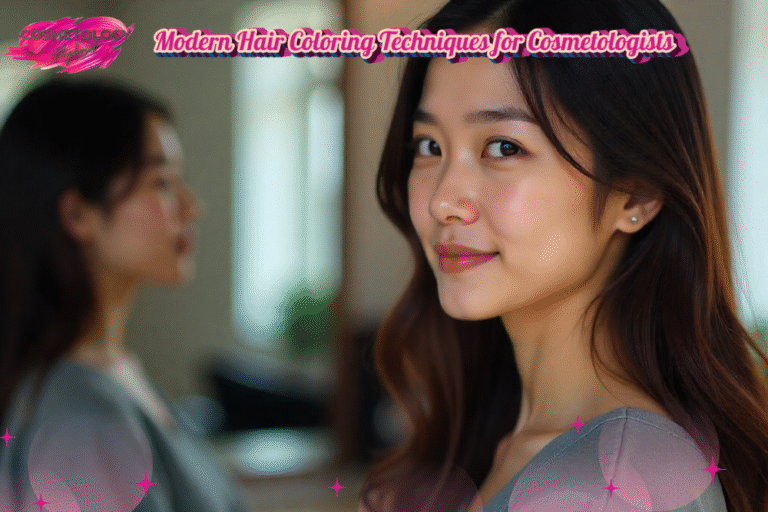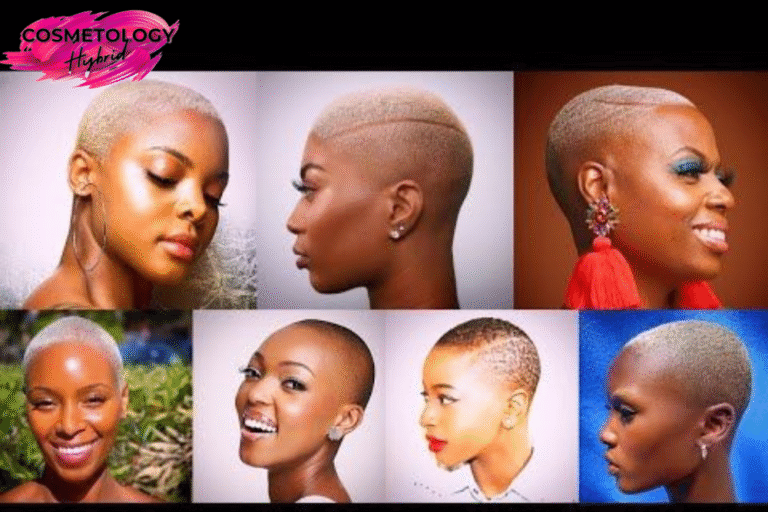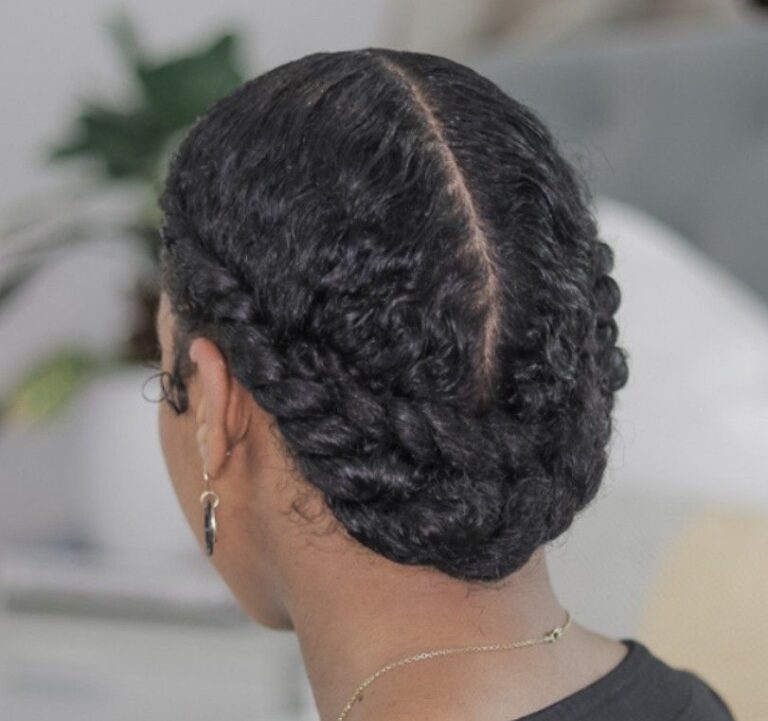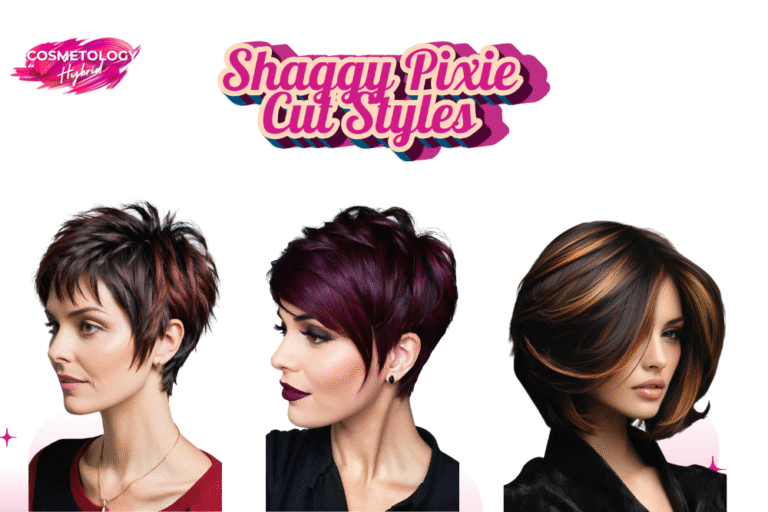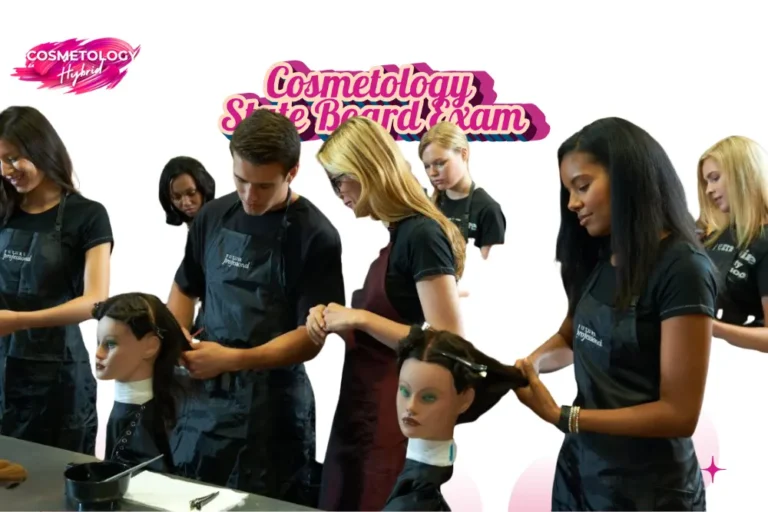Finding a haircut that looks intentional, holds volume, and still fits everyday life is harder than it should be. Clients get cuts that are either too soft to notice or too sharp to wear to work. Students get graded on technique that does not always translate to real clients. The low blowout fade solves both problems. It gives a tidy, low-placed fade on the sides, with a rounded, lifted crown on top that you can shape with a brush and dryer. At Hybrid Cosmetology School, this cut is taught in both the Barbering Program and the Cosmetology Program, because it builds blending skill, styling control, and client communication all at once.
What is a Low Blowout Fade, and why it works
Here is the thing. A low blowout fade places the fade line low, around the temple and above the ear, while the top is left longer and shaped upward with a blowout. The sides read neat, the crown reads airy. That contrast is what gives the style structure without volume looking forced.
What this really means is versatility. You can keep the top soft and textured for everyday wear, or crank the volume into a dramatic shape for an event. From a teaching perspective, the low blowout fade trains students to control two different actions at once, clipper blending and thermal styling, which are core salon skills.
Who looks best with a low blowout fade, face shapes and hair types
- Best face shapes, oval and round often gain the most from the added height at the crown. A little lift lengthens the face.
- Square faces benefit when you soften the sides, but keep a controlled top to avoid adding width.
- Hair types, thick and wavy hair are the easiest to blow out and hold shape. Fine hair can work, you just need layering and the right pre-styler. Curly hair needs longer top length and creams or mousses to shape without frizz.
At Hybrid Cosmetology School, students learn how to modify length and layering based on face shape and hair density, so the same cut can be personalized for every client.
How to ask your barber, exact phrasing and the three-photo trick
Say this, and mean it. “I want a low blowout fade, keep the sides low near the temples, fuller on top with lift and movement, light texture, and a tidy neckline.” Then show three photos, one from the side, one from the back, and one from the crown. Photos reduce guesswork.
If you are a student practicing consultations, note what clients say about maintenance and styling time. Teaching clients how to describe their routine saves both of you trouble on day one.
Clipper guard numbers, approximate lengths, and what to show
Common guard ranges for a low blowout fade are usually between #0 or #1 at the base, blending up through #2 and #3 as you reach the top. If you want numbers:
- #0 is roughly 1.6 mm, #1 is about 3.2 mm, #2 is about 6.4 mm, and #3 is about 9.5 mm.
- A typical sequence for a clean low blowout fade might be start at #1 or #0 at the very bottom, create a guideline at #2, then blend with #1.5 or clipper-over-comb into the top.
Remember, guards vary slightly between brands. The exact sequence depends on how tight the client wants the sides and how much contrast they accept.
Step-by-step blowout technique, salon process and at-home routine
Let us break it down into a repeatable workflow you can practice in class and use behind the chair.
In the salon, the pro sequence
- Consult first, clarify maintenance and how much time the client will spend styling.
- Prep with clean, towel-damp hair and a light pre-styler or volumizing spray. This primes the hair for heat shaping.
- Baseline and guideline. Set the lowest guideline around the temple with your chosen guard. Keep it even all the way around.
- Build the fade. Move up in short sections, using ascending guards or lever adjustments to create a soft gradient. Use clipper-over-comb around the parietal ridge to avoid hard steps.
- Top work. Section the top, blow dry with a medium round brush while directing air upward, then use the cool shot to lock lift.
- Detail with scissors for shape, and trimmers for crisp temple and neckline lines.
- Style using a small amount of matte paste or cream, work it from roots to ends, reshape with fingers. Show the client how much to use and how to dry for quick mornings.
At home, quick routine
- Towel dry, apply a pea-sized pre-styler at roots, blast with a dryer while lifting with a round brush, finish with a light clay or paste, and a cool blast to set.
Tools and product checklist
- Dryer with at least 1,800 watts, for reliable airflow.
- Medium round brush, size depends on hair length and how much lift you want.
- Pre-styler or volumizing spray, heat protectant included.
- Matte paste or light clay, for texture without weight.
- Cream or mousse for curly or frizz-prone hair.
- Detail trimmer for edges, and clipper guards for blending.
Students at Hybrid Cosmetology School practice with this kit repeatedly, so product choice becomes second nature when advising clients.
Styling tips for volume, texture and quick fixes
- For instant root lift, use a volumizing pre-styler and lift with the brush while blow drying.
- Dry shampoo works as a quick root booster between washes.
- If the top collapses, warm a small amount of paste between your palms, rake through, then reshape with a brush and blow dryer.
- Avoid heavy oils near the temples, they kill contrast.
Maintenance and trimming schedule
- Most clients need side touch-ups every two to three weeks for the fade to read fresh.
- The top can last longer, depending on the length and the client’s tolerance for shape loss.
- Teach clients a simple at-home line cleanup for the neckline between visits, but avoid heavy self-cutting near the fade, it can create hard lines.
Variations and personalization
- Low skin blowout fade, for more drama and contrast.
- Low drop blowout fade, where the fade curves under the ear to follow the skull.
- Textured low blowout, with choppy layers on top for a messy look.
- Long blowout, keep significant length on top for sweeping volume.
Label each look with suggested guard numbers and product notes so clients and students have a clear reference.
Common mistakes and rescue fixes
- Hard lines from abrupt guard changes. Fix with clipper-over-comb and a soft friction blend.
- Over-texturizing fine hair, which causes the top to collapse. Rescue with added length or a shaping scissor pass.
- Ignoring head shape, which makes a great photo fail in person. Always position guidelines to flatter the skull’s natural flow.
- If a fade looks too stark, allow it to soften for a week, then correct with careful scissor blending.
At Hybrid Cosmetology School instructors teach rescue techniques as part of real-world practice, because not every cut goes perfectly the first time.
Quick facts table
| Quick fact | Detail |
|---|---|
| Typical fade touch up | Two to three weeks |
| Ideal hair type | Thick to wavy holds shape best |
| Key tools | Hair dryer, round brush, pre-styler, matte paste |
| Common error | Hard lines from incorrect guard changes |
FAQs, voice search friendly
What is a low blowout fade haircut.
A low blowout fade blends low sides with a lifted, rounded top. It keeps the sides neat and the crown airy.
How long does a blowout fade last.
Most clients see the fade soften in two to three weeks. The top depends on length and styling.
What guard numbers should I ask for.
Ask for a low fade with a #1 to #3 blend, or say you want the sides low with lift on top, and let the barber confirm exact guards.
How do you style a low blowout fade at home.
Towel dry, apply pre-styler, blow dry with a round brush for lift, then finish with a light paste or cream.
How Hybrid Cosmetology School makes this teachable
Let us be clear. Cutting is part technique, part judgment, and part communication. Hybrid Cosmetology School’s Barbering Program gives students repeated fade practice and hands-on blowout training. The Cosmetology Program covers product selection, styling, and client consults. Students work on mannequins, practice on peers, and get instructor feedback until the process is reliable and repeatable. That combination is why graduates move confidently between salon and barbershop settings.
Related Blogs:
Mid Fade Haircuts: Versatile Styles for Every Client
Mastering the High Blowout Fade Haircut: Techniques for Barbers
10 Stunning Shaggy Pixie Cut Styles Every Cosmetology Student Must Master

